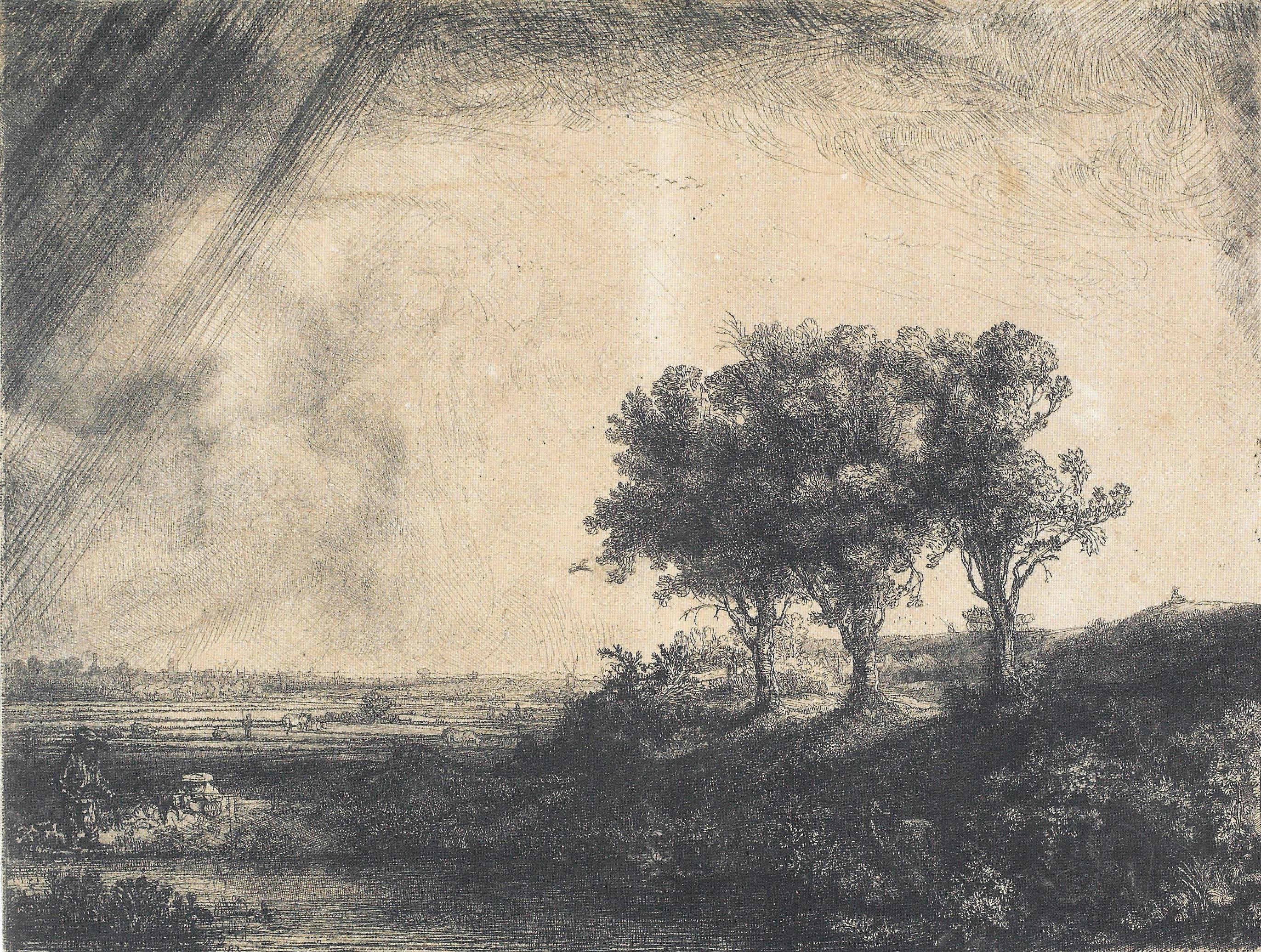The Three Trees
Rembrandt Harmenszoon van Rijn (Dutch, Leiden 1606–1669 Amsterdam)
This is the largest and the most intensely evocative of Rembrandt’s landscape prints. It is an eloquent example of his incredible ability to orchestrate light and shadow to render an atmosphere most effectively and to offer a full, rich sense of colour using only black and white. Rembrandt was able to create these effects using a clever balance of etching, drypoint, and burlin, together with a sulphur dye, to create the complex weaving of light between the skies and the wide country view. The result is an absolute masterpiece of 17th-century engraving, a forerunner of the greatest period of Dutch landscapes, observed in its natural aspects. At the same time, however, it conveys strong symbolist allusions, able to draw the observer into the atmosphere of mystery that pervades it.
The subject is a summer storm moving into the distance. On the left, masses of black clouds pass over the city, while heavy rain continues to fall over the surrounding countryside. On the right, however, the sky is serene and so bright as to make the foreground seem immersed in darkness. This is populated by single narrative episodes: two lovers are hidden behind the bushes and further on, a fisherman in the company of a woman. On the right, against the bright horizon, we see travellers on a cart and an artist, sitting down and enjoying the spectacular view offered by the sun as it comes back to shine over the countryside.
